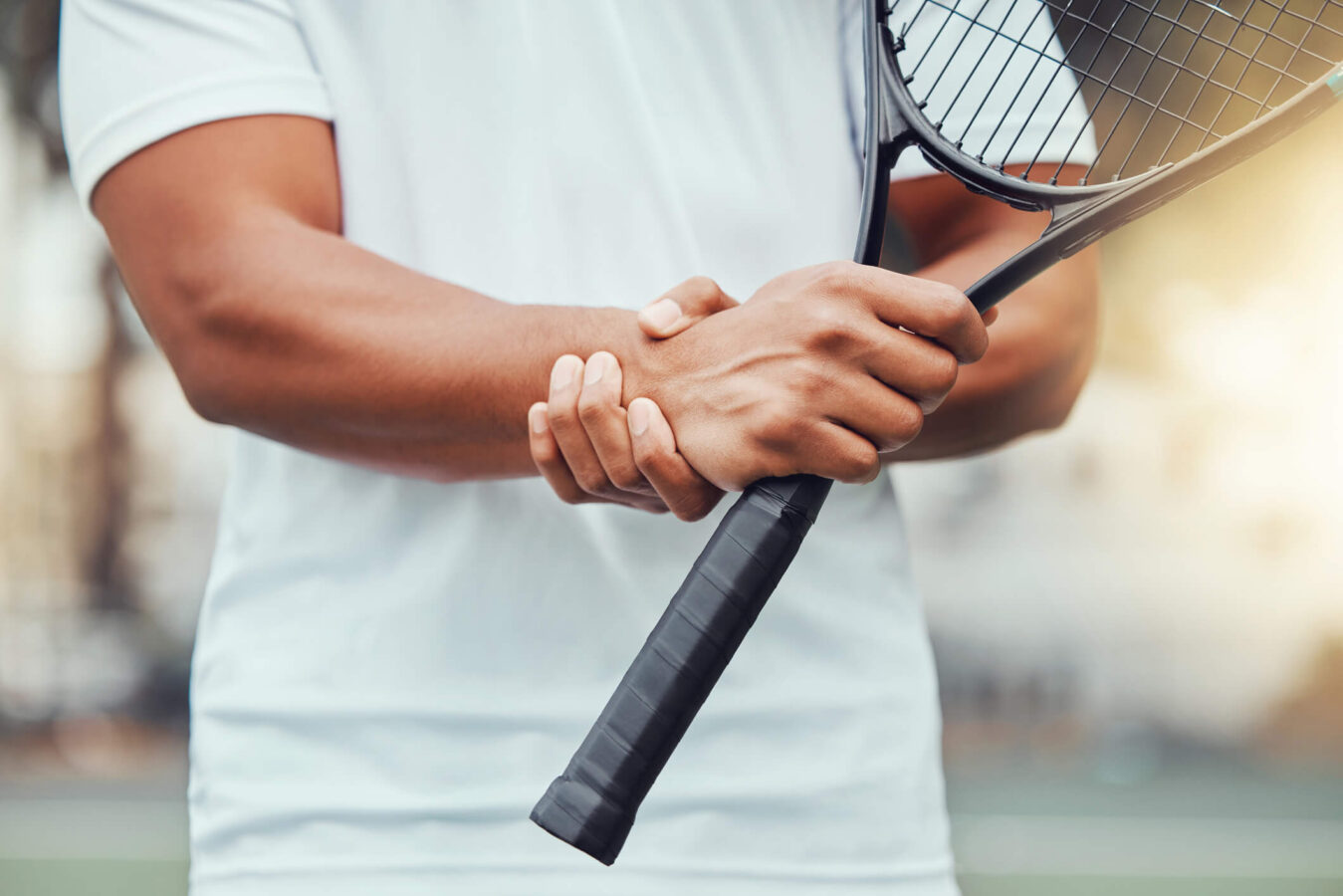
Medically reviewed by Misty Seidenburg
Tennis is a fun, fast-paced sport enjoyed by people of all ages. It involves the entire body, and like all sports, the more you play, the greater the load on those tissues. Repetitive, high-impact movements and improper form increase the risk of tennis injuries. Here, we explore common issues affecting your game and how a physical therapist (PT) or occupational therapist (OT) can assist with tennis injury prevention.
A typical tennis match involves hundreds of strokes starting at the feet and traveling up to the core, hips, and shoulders, into the elbows, hands, and wrists. These complex and repetitive movements make tennis players susceptible to a wide range of acute and chronic musculoskeletal injuries.
Overuse injuries, including sprains and strains in the wrists, knees, elbows, and shoulders, are among the most widely reported tennis injuries. Tennis players are also prone to rotator cuff injuries from the repeated motion of lifting and rotating the arms overhead.
Inflammation or tearing of the patellar tendon, which connects the kneecap to the shinbone, is common in sports that involve frequent jumping, turning, and running. Sudden twisting or pivoting can also lead to overstretching or tearing other supportive and connective structures in the knees, specifically the anterior cruciate ligament (ACL) and meniscus.
Tennis elbow is a painful condition affecting the elbow’s tendons, typically caused by overuse. It can affect anyone with a job or hobby involving vigorous and prolonged use of the forearm or hand and wrist extension, including laborers, cooks, musicians, and crafters.
Whether you play tennis competitively or just for fun, you can take simple steps to stay pain and injury-free.
Warming up before exercise is essential to prepare the body for activity. Gentle, dynamic stretching and sport-specific movements raise body temperature and boost circulation, helping to lower the risk of injury and muscle soreness.
Before a match, try walking briskly for 10-15 minutes. like arm circles, shoulder rolls, walking lunges, and other dynamic stretches open the chain of movement from the feet to the shoulders for safe and fluid motion.
Using the right muscles places less stress on tendons and joints, making the game less taxing on the body. When you move more efficiently, you can play longer—and even hit the ball harder and more accurately—giving you that competitive edge. Work with a coach, trainer, or therapist to adjust your grip, swing, and foot mechanics to prevent painful sprains and strains and elevate your game.
Tennis requires agility, endurance, strength, and speed. The time you spend conditioning your body off the court will translate to positive results at match time. Effective conditioning prepares the body to withstand the rigors of high-intensity physical activity. A solid tennis conditioning program builds stamina while focusing on the areas of the body that most impact performance: the core, elbows, shoulders, and lower extremities.
Physical therapy may be the answer if you want to get in shape and up your game but don’t know where to start. Training with a therapist can improve your coordination, flexibility, and strength.
Sports physical therapy begins with a screening to assess your function level and establish your training goals. Based on these results, your therapist creates a personalized conditioning and mobility program based on your age, health status, and sport of choice—tennis.
They work with you to correct underlying muscle imbalances and mechanical issues to facilitate smooth, controlled, and powerful movements. Because your PT or OT carefully monitors your progress, they can identify and address potential problems early to prevent injury.
Physical therapists also utilize hands-on therapies like soft tissue or joint mobilization and myofascial release to relieve tight, sore, and stiff muscles and joints. Your therapist is also an excellent resource for tips on fitness, nutrition, and recovery to help tennis players maintain a healthy lifestyle.
Pain is a sign that something isn’t right in the body. It’s normal to feel tired and a bit sore after playing tennis. Stretching, foam rolling, or massage often relieves minor discomfort. However, prolonged or intense discomfort should never be ignored.
Schedule a physical therapy visit if pain or problems with mobility or function do not improve with rest. If you get hurt playing tennis and have shooting or stabbing pain, difficulty moving the affected area, or obvious signs of trauma, seek immediate medical attention.
Elbow pain doesn’t have to mean an early retirement from the sport you love. Physical therapy and occupational therapy to rehabilitate tennis elbows and other injuries can be highly effective in restoring mobility and strength for athletes of all ages and abilities. Using evidence-based treatments and techniques, PTs and OTs can help you return to pre-injury function and safely get you back in court.
With this discussion of injuries, it’s important to remember that tennis is generally a safe, low-risk sport and a great way to stay active and fit. Movement therapy provides tools and techniques to play safely, optimize performance, and lower injury risk. Find a physical therapy clinic near you to schedule a screening today.
External Sources: